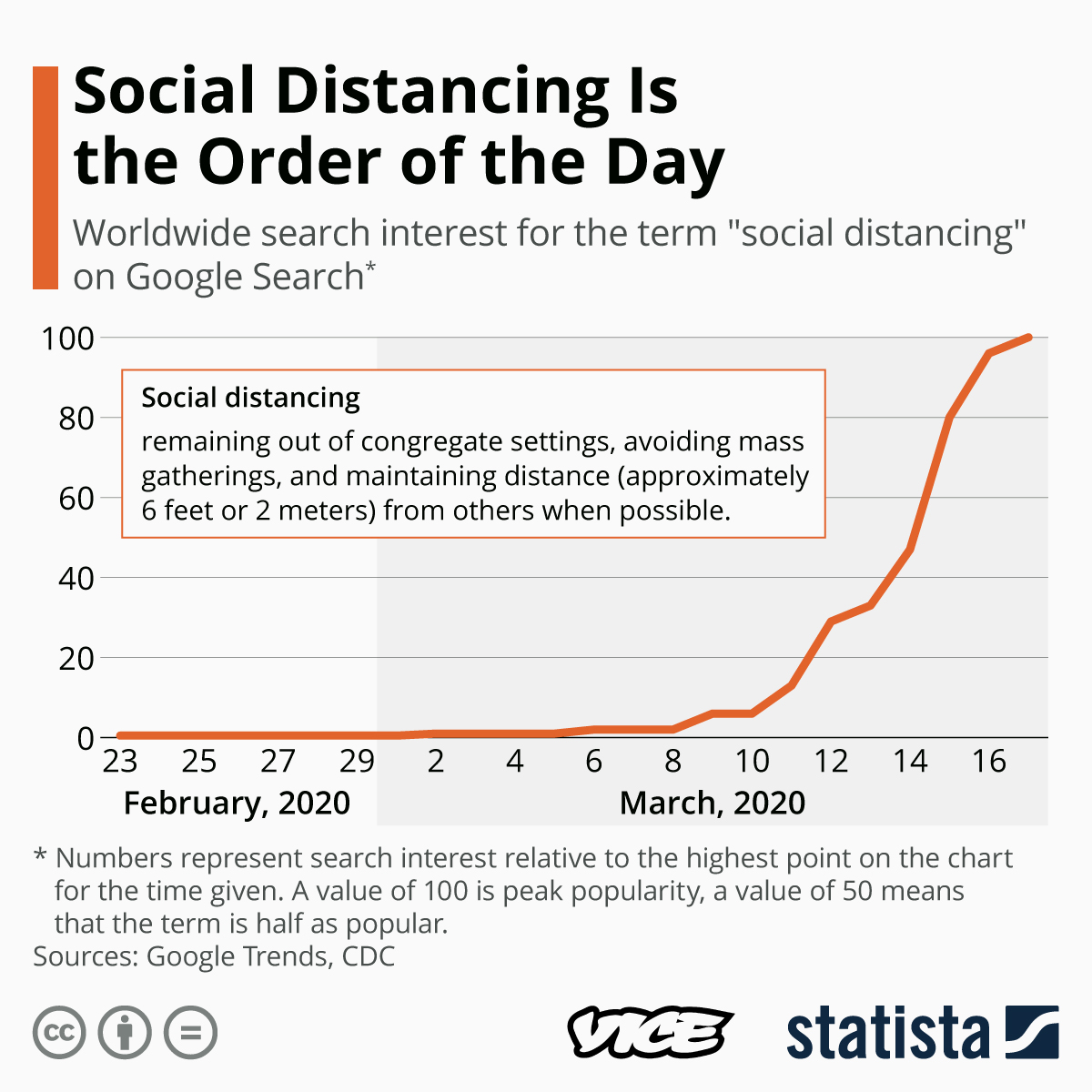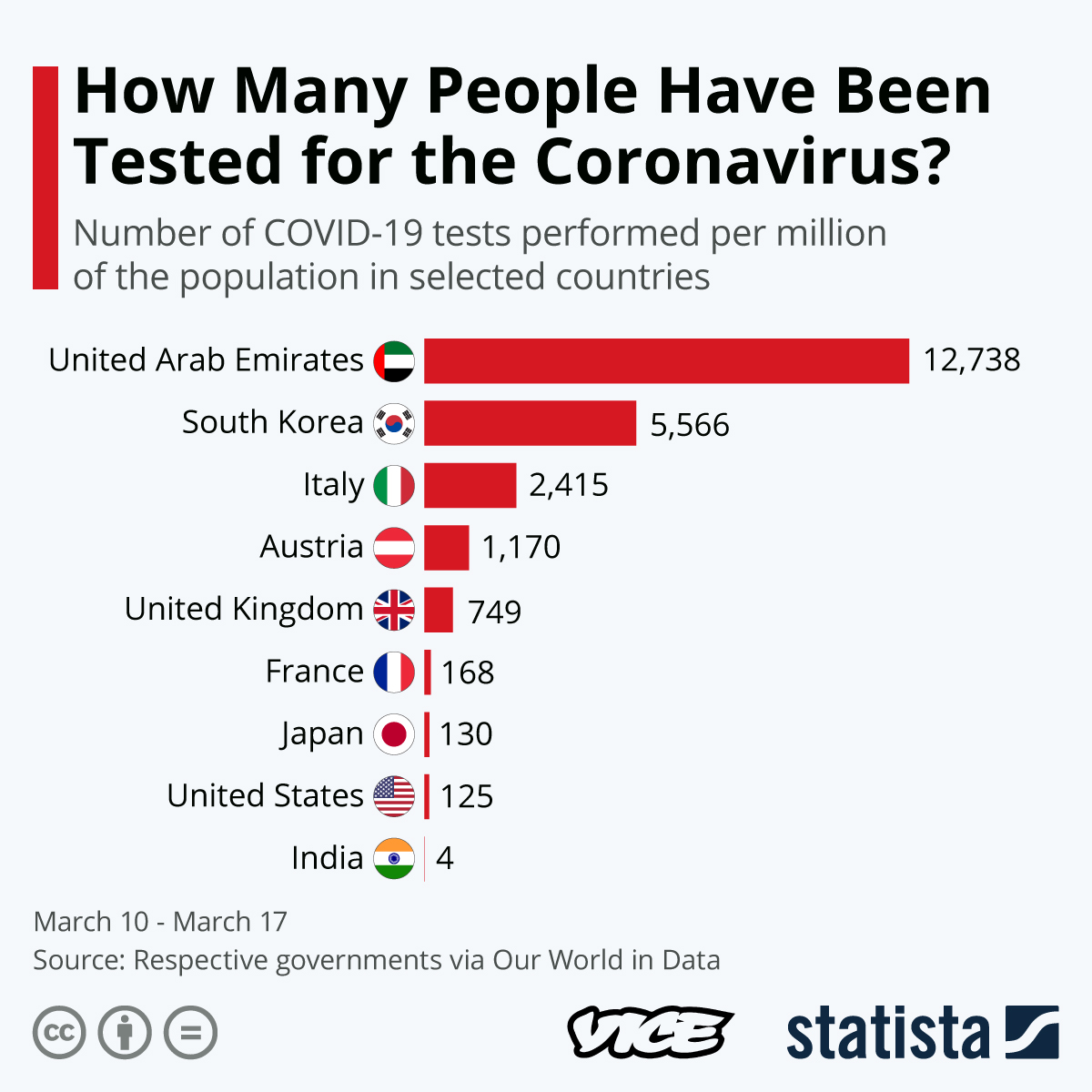By now, you’ve probably heard about “social distancing.” It’s the latest buzzword amid COVID-19 anxieties and is widely regarded as one of the most effective ways to “flatten the curve” — also a buzzword — of projected new cases.
Judging from a recent surge in Google searches about social distancing, it seems like people are catching on and want to learn more about it.
Videos by VICE

So, what does social distancing mean? And why is it important?
According to the Centres for Disease Control and Prevention (CDC), social distancing is defined as “remaining out of congregate settings, avoiding mass gatherings, and maintaining distance (approximately six feet or two metres) from others when possible.”
Amid the escalating coronavirus situation, social distancing serves to slow down the spread of the pandemic. This buys healthcare systems more time to deal with infection cases and allows medical resources to be distributed more evenly over a longer period of time.
In countries like Italy, Spain, France, and Germany, the number of infections are doubling every three to four days. It’s much faster in the United States. Assuming that social distancing increases this duration to eight days, the graph below shows the extent to which social distancing can slow down the rate of transmission. If social distancing measures were taken after reaching 500 cases, the number of infections in a given period would be an eighth of the number of cases if no such measures were taken.

The importance of social distancing becomes even more apparent when we consider how some countries are not testing for the coronavirus enough. This is true for Japan, India, and the United States. The Philippines and Indonesia also have underreported cases.
In many countries, there just aren’t enough testing kits for people who need them. The inaccessibility of coronavirus diagnosis gives rise to uncertainties about the true extent of the virus’ spread.

However, the reality is that not everyone is privileged enough to just stay home and avoid close contact with others. Marginalised communities, where many people live in small houses, don’t have space to properly distance themselves. Others, meanwhile, do not have the option of working from home, either because their employer’s don’t offer it or because the nature of their job requires being outside.
And while social distancing is important, it’s just one part of a holistic strategy to overcome the pandemic.
“Our message to countries continues to be: you must take a comprehensive approach. Not testing alone,” World Health Organisation Director-General Dr. Tedros Adhanom Ghebreyesus said in a speech on March 13. “Not contact tracing alone. Not quarantine alone. Not social distancing alone. Do it all.”
Find Koh Ewe on Instagram.
More
From VICE
-

Screenshot: Blizzard -

Screenshot: Larian Studios -

Photo: ZamoraA / Getty Images -

Photo: ChrisHepburn / Getty Images

